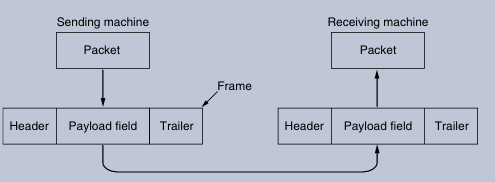Data Link Layer Design Issues: Key Functions and Responsibilities
The Data Link Layer is a vital component of network communication, serving as the bridge between the physical transmission of data and the higher layers of the OSI model. This layer is responsible for several essential functions that ensure reliable and efficient data transfer between adjacent machines. In this article, we will explore the key design issues associated with the Data Link Layer, including its primary functions, error handling, and flow control mechanisms.
Key Functions of the Data Link Layer
The Data Link Layer relies on the services of the Physical Layer to send and receive bits over communication channels. Its primary functions include:
→ Providing a Well-Defined Service Interface: The Data Link Layer offers a clear and structured interface to the Network Layer, facilitating seamless communication between the two layers. This interface ensures that data is transmitted efficiently and correctly.
→ Dealing with Transmission Errors: One of the critical responsibilities of the Data Link Layer is to detect and correct errors that may occur during data transmission. This is essential for maintaining data integrity and ensuring that the information received is accurate.
→ Regulating Data Flow: The Data Link Layer manages the flow of data to prevent slow receivers from being overwhelmed by fast senders. This regulation is crucial for maintaining efficient communication and ensuring that all devices can process incoming data at their own pace.
Frame Management: The Heart of the Data Link Layer
To accomplish its goals, the Data Link Layer encapsulates packets received from the Network Layer into frames for transmission. Each frame consists of:
→ Frame Header: Contains control information, such as source and destination addresses.
→ Payload Field: Holds the actual packet data being transmitted.
→ Frame Trailer: Often includes error-checking information to ensure data integrity.

Frame management is central to the Data Link Layer’s functionality, as it organizes data for transmission and ensures that it is delivered correctly.
Principles of Reliability in the Data Link Layer
While this chapter focuses on the Data Link Layer and its protocols, many of the principles discussed—such as error control and flow control—are also applicable to transport and other network protocols. Reliability is a fundamental goal of network communication, achieved when all layers work together effectively.
In many networks, the functions of error detection and flow control may be handled primarily by the upper layers, with the Data Link Layer performing the minimal tasks necessary to ensure adequate performance. However, the principles of reliability often manifest in their simplest and most effective forms within the Data Link Layer, making it an ideal context for examining these concepts in detail.
Conclusion
The design issues of the Data Link Layer are crucial for achieving reliable and efficient communication in network systems. By understanding its key functions—such as providing a well-defined service interface, managing transmission errors, and regulating data flow—we can appreciate the complexity and importance of this layer in the overall network architecture. The Data Link Layer plays a vital role in ensuring that data is transmitted accurately and efficiently between machines, laying the groundwork for successful communication across the network.
